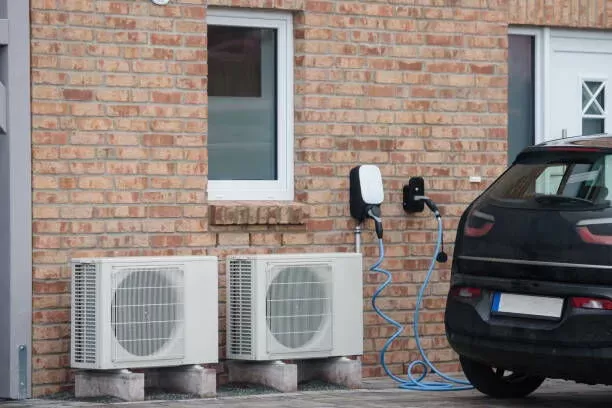Notifications

7 minutes, 31 seconds
-15 Views 0 Comments 0 Likes 0 Reviews

Topper Company, a professional EV charger manufacturer in China, delivers dependable electric vehicle charging stations and comprehensive solutions.
As electric vehicles (EVs) reshape global transportation, the need for accessible, reliable, and safe EV charging infrastructure is growing rapidly. While many EV owners rely on home chargers for convenience, outdoor EV charging stations—located in public spaces, workplaces, commercial lots, and residential complexes—are crucial to supporting the widespread adoption of EVs.
However, outdoor EV charging raises important questions:
Is it safe to charge an EV in rain or snow?
How is the reliability and durability of outdoor chargers ensured in harsh environments?
What regulations protect users and installers from electrical and fire hazards?
This comprehensive guide explores these concerns, covering standards, installation guidelines, weatherproofing requirements, and emerging technologies that make outdoor EV charging safe and future-ready. Whether you’re an EV owner, facility manager, or city planner, understanding these key factors will help you make informed decisions about outdoor EV infrastructure.
Are outdoor EV chargers safe?
The short answer: yes—provided they are installed correctly and used with appropriate precautions.
Modern EV chargers feature robust electrical protections and weather-resistant enclosures designed specifically for outdoor use. They are tested to withstand rain, snow, dust, heat, and coastal corrosion.
Key safety features include ground-fault circuit interrupters (GFCIs), thermal regulation, and automatic shutoff systems that minimize risks such as electric shocks, fires, and overheating. When installed by certified professionals according to electrical codes and standards, outdoor chargers are as safe—or safer—than many household appliances.
Adhering to safety standards is essential for any outdoor EV charging installation. While regional regulations differ, they generally focus on safe electrical design, environmental protection, and user accessibility.
1. National Electrical Code (NEC) – NFPA 70
The NEC is the foundational safety standard in the U.S., with Article 625 covering EV supply equipment (EVSE). Highlights include:
Proper wiring and grounding to prevent shocks
Mandatory GFCI protection for outdoor outlets
Overcurrent protection to prevent circuit damage and fires
The NEC is updated every three years to incorporate innovations such as DC fast charging, wireless charging, and vehicle-to-grid (V2G) technology.
2. International Code Council (ICC) Guidelines
While not legally binding, ICC guidelines influence local regulations by recommending:
EV-ready building codes for parking lots and commercial/residential complexes
ADA-compliant installation locations with sufficient accessibility
Fire safety spacing between charging units and structures
3. State and Local Regulations
Local rules may impose:
Permitting and inspection requirements
Utility coordination to manage grid impact
Incentives or rebates for compliant installations
Noncompliance can cause delays, penalties, or increased liability.
1. Site Location and Accessibility
Proximity to power sources reduces installation costs and power loss
Parking layout must allow smooth traffic flow and emergency access
Adequate lighting enhances security and usability at night
ADA compliance requires at least one accessible charging spot with proper clearance and signage
2. Environmental Protection and Durability
Minimum IP54 rating for weatherproofing; IP65 or higher recommended for harsh conditions
UV-stabilized plastics or powder-coated metals resist sun damage
Corrosion-resistant materials for coastal environments
Connectors designed to function in freezing temperatures with protective covers
3. Electrical Protection Features
Surge Protection Devices (SPDs) safeguard against lightning and surges
Thermal sensors regulate or halt charging at high temperatures
Automatic fault detection ensures immediate shutdown in case of issues
Load management software optimizes energy use, especially for commercial fleets
Myth: Charging an EV in the rain is dangerous.
Fact: Outdoor chargers are designed to operate safely in wet conditions with waterproof enclosures and GFCI protection. Users should avoid standing water and keep connectors clean and dry.
Myth: Outdoor chargers overheat in summer.
Fact: Quality units include thermal sensors and ventilation, tested to withstand temperatures above 120°F (49°C).
Myth: Public chargers are less safe than home units.
Fact: Public chargers undergo stricter regulatory scrutiny, continuous-use testing, and vandal-resistance requirements, often providing superior safety features.
For Installers and Site Operators:
Use certified equipment (UL-listed, Energy Star, CE-approved)
Strictly follow NEC and local codes
Conduct regular inspections for damage or wear
Always use surge protectors and GFCIs
For EV Drivers:
Inspect connectors before plugging in
Avoid charging while standing in water
Report damaged stations promptly
Never force connectors to avoid sparks or damage
Emerging technologies promise smarter, greener, and more integrated charging solutions:
Smart Charging Networks: AI optimizes energy distribution and enables dynamic pricing, reducing grid stress and costs.
Vehicle-to-Grid (V2G): Bidirectional charging allows EVs to store and feed energy back to the grid, aiding grid stability and emergency power.
Solar-Powered Stations: Solar panels with battery storage offer off-grid charging, ideal for remote or backup power.
Wireless and Robotic Charging: Wireless pads and robotic connectors improve convenience, reduce wear, and enhance accessibility.
Outdoor EV charging is no longer a luxury—it’s essential infrastructure for a sustainable future. Thanks to rigorous standards, advanced safety technologies, and thoughtful installation practices, outdoor EV charging is safe, durable, and dependable.
By choosing certified equipment, complying with regulations, and embracing best practices, EV drivers and infrastructure planners can ensure efficient and secure charging in all environments.
The road ahead is electric—and outdoor charging is the critical bridge connecting drivers to cleaner, smarter mobility.Know more about Google SEO Directory
China EV Chargers EV Charger Manufacturer EV Charging Solutions

